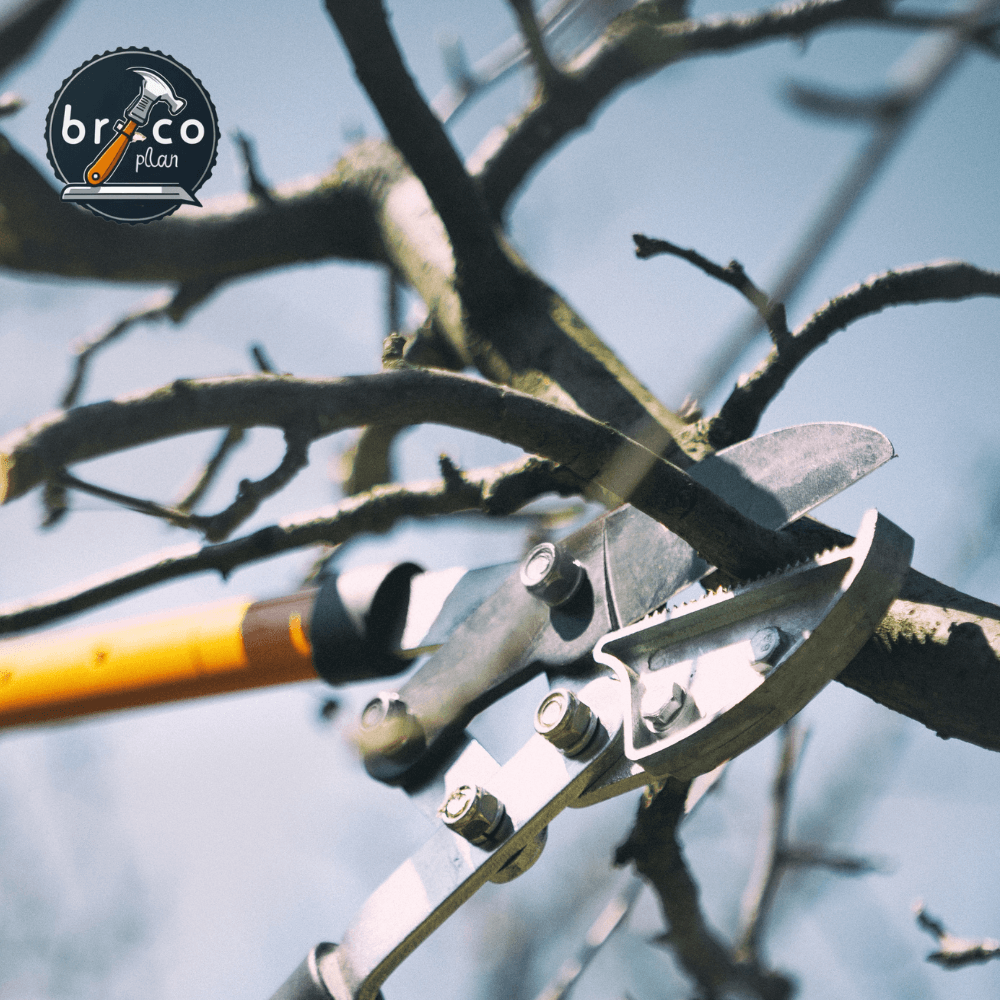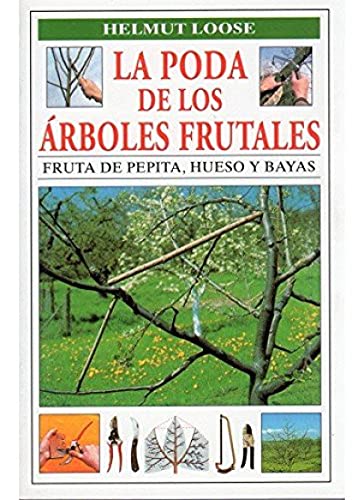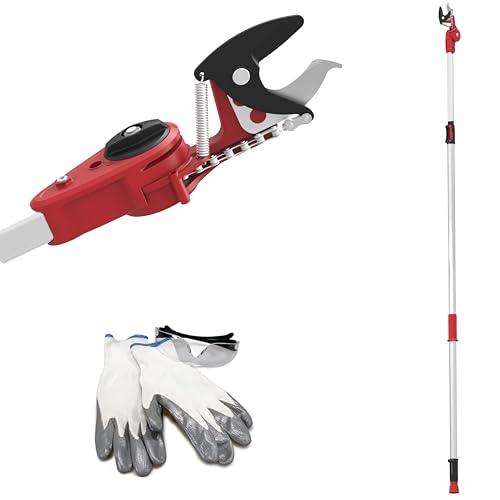
Today I'm bringing you a complete guide on pruning fruit trees. After years of advising on renovation projects at Leroy Merlin, I've learned that caring for our garden is just as important as the interior of our homes.
So, let's dive into the fascinating world of pruning!
Why is pruning fruit trees important?
Before getting into the subject, let me share a personal anecdote. A few years ago, I inherited a small orchard from my grandfather. The fruit trees were neglected and barely bore any fruit. It was then that I realized the importance of pruning. After research and practice, I managed to revive those trees and now enjoy a bountiful harvest every season.
Pruning fruit trees isn't just a maintenance task; it's an art that can make the difference between a mediocre tree and a lush, productive one. Here's why it's so crucial:
- Improves tree health: Remove diseased or damaged branches, preventing the spread of disease.
- Increases fruit productionBy reducing the number of branches, the tree concentrates its energy on the remaining fruits.
- Facilitates collectionA well-pruned structure makes it easier to reach the fruits.
- Improves the quality of the fruitsWith less competition, the fruits grow bigger and tastier.
- Shape the tree: Allows you to control the size and shape of the tree, adapting it to our space.
Types of fruit tree pruning
When it comes to pruning methods, there's no one-size-fits-all formula. Each type of tree and each situation requires a different approach. Throughout my years as a consultant at Leroy Merlin, I've learned that it's crucial to understand the different types of pruning to apply the correct technique in each case. Let's look at the main types:
Training pruning
This type of pruning is performed in the tree's first years of life. The goal is to give it a suitable structure that facilitates its growth and future production. I remember when I planted my first lemon tree; at first, it seemed like it was being "tortured," but over time, I saw how that initial structure allowed it to grow strong and productive.
Fruiting pruning
This type of pruning is performed on adult trees and aims to maintain a balance between vegetative growth and fruit production.
It involves removing old or unproductive branches to stimulate the growth of new fruit-bearing branches.

Rejuvenation pruning
This type of pruning is ideal for old or neglected trees. It involves severe pruning that removes much of the tree's structure to stimulate new growth. It's like giving the tree a second chance.
Sanitary pruning
This type of pruning is done to remove diseased, damaged, or dead branches. It's crucial to maintaining the tree's health and preventing the spread of disease.
Tools needed for pruning fruit trees
As a true DIY enthusiast, I know that having the right tools is half the battle. For pruning fruit trees, these are the tools you shouldn't be without in your arsenal:
Pruning shears: Ideal for cutting small and medium-sized branches.
Pruning saw: For thicker branches that scissors cannot cut
Height shears – Perfect for reaching high branches without a ladder
Chainsaws – For heavier work on large trees
Disinfectant – Cleans cutting tools and prevents disease
- Powerful concentrated triple-action disinfectant: against bacteria, viruses, and fungi, based on quaternary ammonium…
- Complies with European Standard UNE-EN 14476, against encapsulated viruses
- Cleaning and disinfecting all types of surfaces (work tables, metal surfaces and floors, bathrooms, etc.), but…
I remember the first time I used a chainsaw to prune an old apple tree. I was nervous, but by following safety precautions and with practice, it became an indispensable tool for me.
Fruit tree pruning techniques
Now that we know the types of pruning and the necessary tools, let's delve into the specific techniques. These are the ones I've perfected over the years and which I enthusiastically share in my consulting sessions:
1. Cleaning cut
It involves removing dry, diseased, or damaged branches. It's the first step in any pruning and should be done regardless of the time of year.
2. Thinning branches
This involves removing branches that grow inward or cross each other. This improves air and light circulation within the canopy.
3. Branch trimming
It involves cutting a portion of a branch to control its growth. It's useful for maintaining the desired tree size.
4. Spike
It is done at the ends of the branches to stimulate lateral growth and fruit production.
5. Incisions
They are small cuts in the bark that stimulate the growth of new branches or buds.
Fruit tree pruning calendar in Spain
One of the most frequently asked questions I get in my consulting sessions is: "When should I prune my fruit trees?" The answer depends on the type of tree and the climate in your region. Here's a table I created based on my experience in the Mediterranean climate:
| Type of tree | Pruning season | Observations |
|---|---|---|
| Apple and Pear Tree | Winter (vegetative rest) | Avoid frosty days |
| Peach and Apricot Tree | Late winter – Early spring | Just before flowering |
| Cherry and Plum | Summer (after harvest) | Avoid gummosis |
| Fig tree | Winter | Light pruning |
| Citrus (Orange, Lemon) | Spring | After the harvest |
| Olive tree | Late winter – Early spring | Before sprouting |
Practical tips for pruning fruit trees
After years of pruning my own trees and advising others, I've compiled some tips that you might find helpful:
- Look before you cut: Take your time to study the structure of the tree before you begin pruning.
- Less is more: Do not remove more than 30% of the branches in a single pruning session.
- Cut at the correct angle: Make clean cuts at a 45-degree angle to promote healing.
- Keep your tools sharp: Well-maintained tools make cleaner cuts and reduce tree stress.
- Disinfect your tools: Clean your tools between trees to prevent the spread of disease.
- Respect the natural shape of the tree:Each species has its characteristic form, try to maintain it.
- Be patientThe results of good pruning are seen in the long term. Don't be discouraged if you don't see immediate changes.
Common mistakes when pruning fruit trees
Throughout my career, I've seen many mistakes when pruning fruit trees. Here are the most common ones so you can avoid them:
- Pruning at the wrong timeEach species has its ideal pruning time. Pruning at the wrong time can stress the tree and reduce its yield.
- OverpruningRemoving too many branches can weaken the tree and reduce its fruit production.
- Incorrect cuts:Cuts too close or too far from the bud can damage the tree and make it difficult to heal.
- Ignore the tree structure: It is important to maintain a balanced structure for the tree to grow healthy and productive.
- Not disinfecting tools: This can spread diseases between trees.
- Neglecting formative pruningThe first few years are crucial to establishing a good structure.
- Using inappropriate tools: Using dull or inappropriate tools can damage the tree.
Pruning fruit trees in Spain
In Spain, pruning fruit trees is a widespread practice due to the importance of fruit growing in our economy. According to data from the Ministry of Agriculture, Fisheries, and Food, Spain is the second-largest producer of fruits and vegetables in the European Union, behind only Italy.
Our country's diverse climate allows for the cultivation of a wide variety of fruit trees, from citrus trees on the Mediterranean coast to apple trees in the north. This means that pruning techniques vary depending on the region and the type of tree.
In my experience advising projects in different parts of Spain, I have noticed some interesting trends:
- In regions such as Murcia and Valencia, which specialize in citrus fruits, pruning is frequently done to keep the trees at a height that facilitates harvesting.
- In areas like Lleida, famous for its apples and pears, trellis pruning is widely practiced to maximize production in small spaces.
- In Andalusia, olive pruning is almost an art, with specific techniques to keep these centuries-old trees productive.
Innovations in fruit tree pruning
The fruit-growing sector in Spain is constantly evolving, and with it, pruning techniques. Some of the most interesting innovations I've seen recently include:
- Mechanical pruning: Increasingly common on large farms, it allows for quick and uniform pruning.
- Drone-assisted pruningAlthough still in the experimental phase, drones are being used to analyze tree structure and plan pruning more precisely.
- 2D driving systemsThese new ways of guiding tree growth facilitate mechanization and increase production efficiency.
- Green pruningAlthough it is not a new technique, it is gaining popularity due to its benefits in controlling tree vigor and improving fruit quality.
Conclusion: Pruning as an art and science
After so many years working with fruit trees, I can say that pruning is both an art and a science. It requires technical knowledge, but also intuition and experience. Each tree is unique and responds differently to our work.
My final piece of advice for anyone venturing into the world of pruning is to observe, learn, and, above all, enjoy the process. Seeing a well-pruned tree blossom and bear abundant fruit is one of the most rewarding experiences you can have in your garden.
My recommended reading books on the Art of Pruning
I hope this guide has been helpful and encourages you to grab your pruning shears and get out into the garden. Remember, practice makes perfect, so don't be afraid to experiment (carefully, of course).
If you have any further questions or would like to share your experiences pruning fruit trees, please feel free to leave a comment.
Here are some suggested posts on Bricoplan that might be of interest to you:
- How to Keep Your Chainsaw in Perfect Condition
- Pruning Chainsaws: We Compare the Best
- The Best Gardening Tools for Professionals
- The 5 Best Lumberjack Axes for Quality and Price
- The 5 Best Battery-Powered Mini Chainsaws
- What is DIY in Spain?
- The Impact of Renewable Energy in Spain
- The Rise of Home DIY in Spain
Happy Pruning!
















